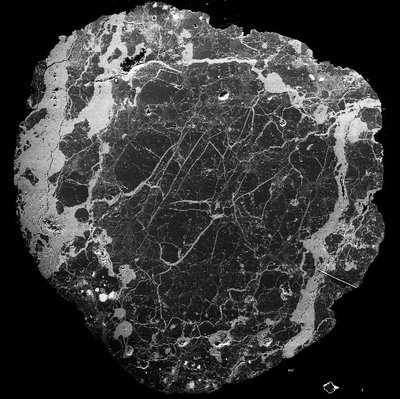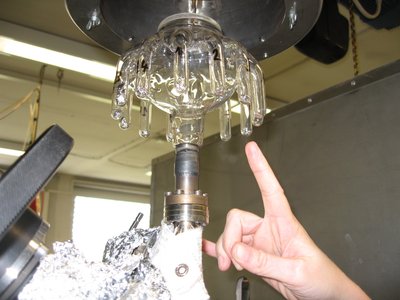Space rocks reveal secrets of the solar system
Wednesday, 31 October, 2012
The history of our solar system is being uncovered using Australia’s only nuclear reactor. The Australian Nuclear Science and Technology Organisation (ANSTO), located in Sydney’s Sutherland Shire, has partnered with Germany’s prestigious Max Planck Institute for Chemistry (MPIC) in order to analyse chondrules - multibillion-year-old particles from outer space.

As explained by Dr John Bennett, who heads the neutron activation analysis (NAA) team in Nuclear Operations for ANSTO, the 1 mm-wide chondrules are found in meteorites. “Some meteorite types have a ‘blueberry muffin’ composition, made up of small pebble-like lumps embedded in a different matrix material,” he said. “The chondrules used in this study were removed from the matrix using a freeze-thaw technique.”
The study is a part of PhD research being conducted by German cosmochemist Uta Beyersdorf-Kuis. According to Dr Bennett, the partnership came about when enquires from the MPIC research group identified ANSTO’s OPAL research reactor as “one of the few high-performance reactors in the world that was able to perform NAA with the accuracy and precision required”.

The aim of the research is to determine the length of time that the chondrules have been exposed to cosmic rays in the solar system on their way to Earth since the dislodgement from their parent bodies. This will be used to pin down time scales for the formation of asteroids and planetoids within our solar system.
“Some elements produce gases when they are exposed to cosmic rays and these gases are held trapped in the chondrule. The longer the exposure, the more gas is produced,” said Dr Bennett. “As an example, if you know how much magnesium is in the chondrule and you measure how much neon is trapped, you can calculate how long the chondrule has been exposed to cosmic rays.”
Beyersdorf-Kuis sends the chondrules to ANSTO in batches. They irradiate each one for a few minutes in the OPAL reactor and use NAA to determine the content of magnesium, aluminium, sodium, iron and other metals. After the radioactivity level is safe again, they return to chondrules to Beyersdorf-Kuis, who uses a noble gas spectrometer to heat up the chondrules to drive off the gases and measure the neon content.

So far, the results have indicated that the chondrules took 4-7 million years to reach Earth after the impact event that sent them here. Dr Bennett says they also appear to have been initially present in the solar nebula as “free-floating objects before they were compacted into the parent body”.
“This information provides glimpses into the processes that occurred during the formation of our solar system,” he added.
The final results will be in Beyersdorf-Kuis’s thesis, which she will submit early next year, but Dr Bennett stressed that the research is just one small piece of “the cosmological jigsaw puzzle”.
European Space Agency inaugurates deep space antenna in WA
The ESA has expanded its capability to communicate with scientific, exploration and space safety...
Black hole collision supports Hawking's landmark theory
Astrophysicists have witnessed a collision between two black holes that was so loud, they were...
Uncovering differences in wild and domesticated crops
Researchers have revealed insights into the genetic make-up of wild varieties of common crops...





